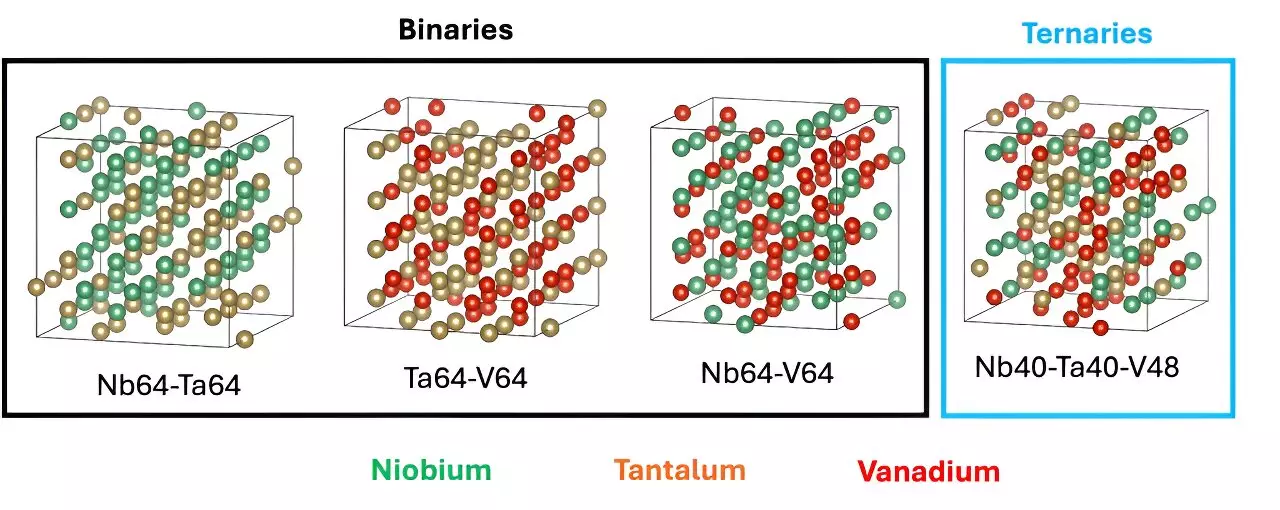The intersection of artificial intelligence (AI) and material science has ushered in a new era of innovation, particularly in the fields requiring advanced materials, such as nuclear fusion. A remarkable study spearheaded by the Oak Ridge National Laboratory’s (ORNL) Department of Energy has uncovered the potential of AI to identify novel alloys that can serve as exceptional shielding materials in nuclear fusion reactors. This initiative, which has evolved significantly over several years, illustrates how data-driven decision-making can expedite the research and development process by targeting specific materials with desired properties.
Metal alloys are crucial in various high-stress applications, particularly in environments like those found within a nuclear fusion reactor. Previously, researchers relied predominantly on tungsten-based alloys. While these materials were praised for their high-temperature resistance, they exhibited inconsistencies in their shielding capabilities, posing potential risks in nuclear applications. Lupo Pasini, an ORNL AI data scientist, highlighted the urgency for transformative materials that defy conventional properties, emphasizing the need for alloys that maintain not only thermal resilience but also structural integrity under extreme conditions.
The main impediment facing researchers is the vast number of possible elemental combinations that can create new alloys. Traditional methods often necessitated long, exhaustive trial-and-error approaches, which are both time-consuming and resource-heavy. Through the incorporation of AI technologies, these barriers are being dismantled. AI can analyze complex datasets much faster than human researchers, allowing for a more streamlined process in discovering viable combinations of metals that hold promise for use in fusion reactors.
The Collaborative Effort Behind the Research
A multi-disciplinary team, including physicists and data scientists, collaborated in this groundbreaking study, with efforts focusing on generating high-quality data sets that feed AI algorithms. After synthesizing extensive data, the team identified three promising elements as candidates for further research into new metallic alloys. The collaborative nature of this research is essential to bridge the gap between computational science and practical material applications, demonstrating how collective expertise can facilitate advancements in critical sectors like nuclear energy.
One of the most significant accomplishments of this study is the creation of an extensive AI-generated database. However, this is just the initial phase of the project. The data serves as a launching point for subsequent work in training more advanced machine learning (ML) models that promise to enhance alloy discovery. Pasini emphasized the importance of covering multiple elements in future research and acknowledged the cost and complexity of conducting quantum mechanical calculations necessary for precise material modeling.
The research team’s commitment to overcoming these obstacles involved significant computational efforts on high-performance supercomputers, namely the Perlmutter and Summit systems. The generation of reliable and extensive datasets is labor-intensive and resource-dependent, taking more than a year to reach completion. Yet, the payoff in terms of potential discoveries is considerable, paving the way for groundbreaking advancements in fusion technology.
In line with these findings, the research team envisions using their AI model to expedite the exploration of various compound mixtures. The ultimate goal is to assist material scientists in determining the optimal ratios of different elements to yield alloy compositions that align with the rigorous demands of nuclear fusion technology. By refining the alloy design process, the researchers aim to catalyze innovations that could have profound implications for energy generation through nuclear fusion.
The implications of this research extend far beyond the immediate goal of alloy discovery. By leveraging AI’s capabilities in material science, the potential for disruptive technological advancements in nuclear fusion becomes more tangible. As the field progresses, the combination of innovative thinking, collaborative effort, and cutting-edge technology stands poised to redefine the standards of materials used in high-performance applications, indicating a bright future for fusion energy and beyond.


Leave a Reply